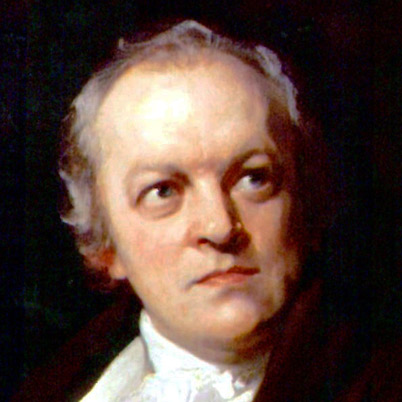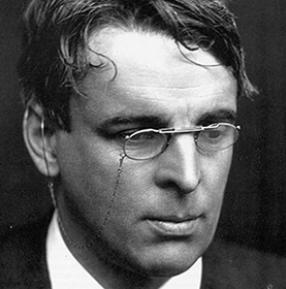The Echoing Green: Analysis
This poem can be interpreted in many ways. The first interpretation relies on the fact that this poem was included in Blake’s poetry collection known as The Songs of Innocence. Hence it should not surprise us that the green is a metaphor for innocence. Children play here in the lap of nature without any worries, for they have not yet experienced the harshness of life. They are still under the care and protection of their mothers. They are also more in tune with nature now than they will ever be again. As they grow older, culture and civilization will take the place of nature in exercising a formative influence on them. However, the green is not just a place where young children play. It is also a place where old men come to relax and leave behind their worries. Thus the green also represents a higher innocence that Blake calls ‘Beulah’. This means that after man has gone through the stages of innocence experience after seeing the world both in its beauty and its cruelty, he can find an inner sanctum of peace in his share of knowledge. He learns to take both the joys and the sorrows that life offers in his path, and react to them with a certain amount of stoicism. Neither does joy overwhelm him, nor does sorrow depress him. He maintains an equilibrium in order to get through the day.
The other interpretation of this poem relies on the passage of time that happens as each stanza of the poem progresses into the next. The poem starts at break of day with birdsong and the ringing of church bells. It ends with darkness coming down upon the green. At first, the children are enthusiastic about their play. However, by the end of the day, they are tired and only want to rest their heads on the laps of their mothers. This progression of time is analogous to the life cycle of man. When a man is born, he is close to nature, without any cares and with ample time for himself. However, as he grows older, he becomes more attuned with culture and civilization, develops a cynical attitude, is overburdened by worrisome situations and has no time for himself at all. As he approaches the end of his life, he is inclined to rid himself of his worries and troubles and take a break from the hectic pace of life. He wants to rest and relax. Just like the day comes to an end in the green, a man also cannot avoid death. He is mortal and must succumb to death at some point in time or the other. That is why he should seize the day and cherish his time on earth.
The Echoing Green: Annotations
Please note: N= noun, V=verb, Adj=Adjective, Adv=Adverb, P=Preposition
1st stanza:
Merry (Adj): Cheerful and lively
Skylark (N): A common Eurasian and North African lark of farmland and open country, noted for its prolonged song given in hovering flight
Thrush (N): A small or medium-sized songbird, typically having a brown back, spotted breast, and loud song
Sports (N): Plural form of the word “sport”, that is, entertainment or fun
Echoing (V): Present participle form of the word “echo”, that is, (of a place) resound with or reflect back a sound
Green (N): A piece of public grassy land, especially in the center of a village
2nd stanza:
Care (N): A feeling of or occasion for anxiety
Oak (N): A large tree which bears acorns and typically has lobed deciduous leaves. Oaks are dominant in many north temperate forests and are an important source of durable timber used in building, furniture, and (formerly) ships
Folk (N): People in general
Play (N): The state of being active, operative, or effective
3rd stanza:
Weary (Adj): Feeling or showing extreme tiredness, especially as a result of excessive exertion
Descend (V): Move or fall downwards
Laps (N): Plural form of the word “lap”, that is, the flat area between the waist and knees of a seated person
Darkening (V): Present participle form of the word “darken”, that is, make or become dark or darker.
The Echoing Green: Poetic Devices
Rhyme scheme:
Each of the 3 stanzas in this poem is made up of 5 rhyming couplets, that is, they follow the rhyme scheme – AABBCCDDEE. In addition to this, it must be said that the final rhyming couplet of all the 3 stanzas is strikingly similar and ends with the same rhyming words – “seen” and “green”.
Rhetorical devices:
Personification:
This rhetorical device is used to bestow human qualities on something that is not human. In this poem, the poet uses the device of personification in the 2nd line of the 1st stanza with respect to the sun by endowing the sun with the human ability to spread happiness.
Transferred epithet:
This rhetorical device is used when an emotion is attributed to a non-living thing after being displaced from a person, most often the poet himself or herself. In this poem, the poet uses the device of transferred epithet in the 2nd line of the 1st stanza when he says that the skies became happy. Of course, the sky is a non-living thing and it cannot experience emotions such as happiness. What the poet means is that the rising of the sun in the sky makes the people of the green feel happy.
Simile:
This rhetorical device is used when an overt comparison is made between two different things. In this poem, the poet uses the device of simile in the 6th and 7th lines of the 3rd stanza when he compares the children falling asleep on the laps of their mothers with birds in there and also uses the word “like” while making this comparison.
The Echoing Green: Central Idea
On the green, the day starts with the song of birds who have flown north in the spring and who now perch on the bushes lining the green. In addition to these birds, you can also hear the sound of church bells ringing. Children are playing happily, while old folks relax under the shade of an oak tree. Among these old folk is John who seems to have left all his worries behind. All the old folks reminisce about their childhood. At dusk, the children grow tired and abandon their play to rest with their siblings on the laps of their mothers. The sun sets and the green becomes shrouded in darkness.
The Echoing Green: Theme
The green as a site of innocence:
The green that the poet depicts in this poem is a site of both lower and higher innocence. That is why you find both children and old folks there. The children represent innocence in its purest form as they are close to nature and enthusiastic about each day as it passes. The old folks represent higher innocence or ‘Beulah’ since they have already weathered the storms of life and emerged victoriously. They can now accept both joy and pain without being overly affected by either. They reminisce about their own children but do not envy the younger generation even though they have much more time left to spend on earth than they themselves do. They accept that their lives are coming to an end, and only try to find some peace and quiet before it is their time to leave this earth forever.
The poem as a symbol of human life:
This poem spans the length of an entire day on the green. Some critics have compared this diurnal cycle with the life cycle of man. The day starts on the green with the songs of birds and the ringing of church bells. The children play in an energetic manner at that time. However, towards the end of the poem, the sun sets, and the green lightened by the sun’s light area is shrouded in darkness. The children are too tired to play anymore. They want to rest their heads on the laps of their mothers. They are so exhausted that all sibling rivalry is forgotten and they lie with their brothers and sisters in the same place. Similarly, a man starts his life with enthusiasm. As life progresses, he develops a kind of cynicism. However, at the end of life, all battles are forgotten and all wrongs are forgiven. Man only wants to rest and relax for his last days on earth. This is how the entire poem functions as a symbol for human life itself.
The Echoing Green: Tone
The tone of this poem is overall quite cheerful. However, if we read between the lines, we will see that the poet is also commenting on the brevity of human life. Just as the day passes by very quickly on the green, the individual human life to spans a very short time in the history of the universe. That is why even after w become aware of the cruelties of the world, we should take time out to experience and enjoy its beauties.
“The Echoing Green” seems to be a straightforward poem on the surface. However, if we dig deeper, we will find that it bears evidence of Blake’s schema of innocence followed by experience, followed by higher innocence or Beulah. This scheme would be difficult to understand for a reader who is unaware of Blake’s extensive use of symbols. Moreover, the poem also makes insightful comments on the brevity of life and advises readers to seize the day. You can also refer to the Summary of Echoing Green here.
Some online learning platforms provide certifications, while others are designed to simply grow your skills in your personal and professional life. Including Masterclass and Coursera, here are our recommendations for the best online learning platforms you can sign up for today.
The 7 Best Online Learning Platforms of 2022
- Best Overall: Coursera
- Best for Niche Topics: Udemy
- Best for Creative Fields: Skillshare
- Best for Celebrity Lessons: MasterClass
- Best for STEM: EdX
- Best for Career Building: Udacity
- Best for Data Learning: Pluralsight













